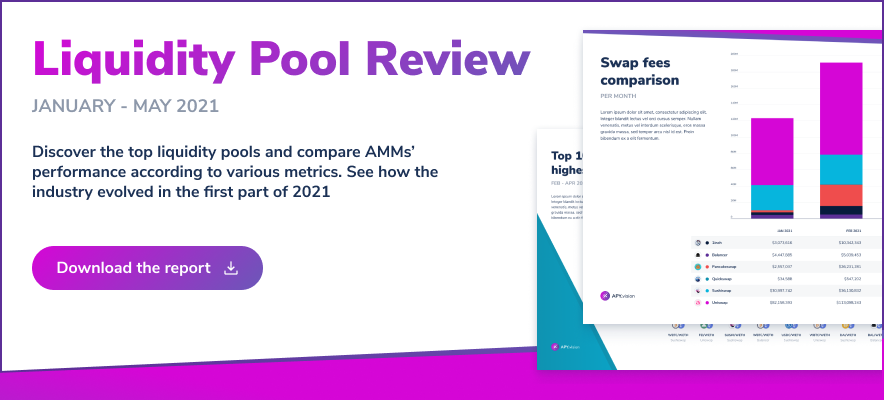How to Provide Liquidity on Curve

In this post, we will be sharing information that will help you learn how to provide liquidity to the Curve AMM platform.
What is Curve?
Curve is an exchange liquidity pool designed for extremely efficient stablecoin trading and low risk, supplemental fee income for liquidity providers via the CRV token rewards.
Curve allows users to trade between stablecoins with a low slippage, low fee algorithm designed specifically for stablecoins. Yield is generated from fees that users pay when they perform a token swap on the platform. Behind the scenes, the liquidity pool is also supplied to the Compound protocol or yearn.finance where it generates even more income for liquidity providers.
What makes Curve different from other DEX’s?
Curve uses similar principles to other AMM’s like Uniswap with the use of bonding curves and liquidity pools. Curve engineering their system to be highly efficient for the swapping of assets that are stable, i.e. stablecoins like DAI, USDC, USDT, and others. This is accomplished by using a different shape curve than the model used by Uniswap and keeps slippage and fees low.
What chains can I provide Liquidity to via Curve?
Ethereum mainnet, Polygon, Fantom and xDai
Where does the yield come from?
For every trade on Curve.fi, liquidity providers earn fees from the swap, this is why the listed APRs will fluctuate a lot based on volume and volatility. The liquidity pools are also supplied to lending protocols like Compound (for cPool) in the background so you can earn additional interest on top of the trading fees. The y pools (all the pools using yTokens ie PAX, Y and BUSD) use a protocol called yearn for yield aggregation.
It’s important to note that because fees are dependent on volume, daily APRs can often vary wildly depending on market conditions. There are pools (sUSD, ren and sbtc) that do not use any lending protocols and therefore have less contract risk from composability.
In addition to the yield generated by the swap fees on the platform, Curve also issues the CRV token as a reward to liquidity providers when staked in the gauge. The amount of CRV issued depends on certain parameters related to time locking CRV.

How to use the Curve interface
When you first navigate to Curve.fi, the first screen you will be presented with is the user interface for swapping tokens. In order to provide liquidity, you will have to select one of the various Curve pools. The tokens eligible for deposit are listed below the pool (example: 3pool can take deposits of DAI, USDC or USDT). The APY’s listed have various components to them. The “Base vAPY” is a number that changes daily depending on the trading activity in the pool. The “Rewards tAPY” is a number that has a range that tells you the CRV rewards you can earn from being in the pool. Curve has a system for locking CRV tokens which can boost your APY, the low end of the range is for no locking and the high end of the range is based on locked CRV.
Once you select a pool, you need to navigate to the “deposit” screen to get the interface pictured below. You can deposit any of the tokens listed, but there are some caveats. Curve will give you a “deposit bonus” if the token you are supplying is under-supplied to the pool.
Example:
DAI: 318,006,247.51 (22.84%)
USDC: 716,514,039.03 (51.47%)
USDT: 357,640,610.10 (25.69%)
DAI+USDC+USDT: 1,392,160,896.65
You can see that DAI and USDT have a lower ratio than USDC, so Curve will issue a deposit bonus for helping to even out the ratio by depositing DAI or USDT. This also works when withdrawing from the pool, if you withdraw the token with a higher ratio (USDC in this case) you will get a small bonus.
You can see in the above image there are two options presented: “Deposit” and “Deposit & stake in gauge”. Clicking “Deposit” will put your tokens into the pool and start earning the “Base vAPY”. In order to get the CRV rewards, you must also “stake in gauge” and the interface allows you to do that by clicking the button, although there are two transactions that take place. The first transaction is the deposit, and the second transaction is to stake the LP token for rewards.
New – Curve’s volatile asset pools
One of the latest additions to Curve is a move away from their traditional model of stablecoin pools. In the “atricrypto” crypto pool, depositors have exposure to wrapped Bitcoin and Ethereum as well as DAI, USDT, and USDC via the am3CRV pool. While these pools typically have higher rewards, they also expose you to impermanent loss due to price fluctuations in BTC and ETH.
How to track your Curve portfolio with APY.Vision
Luckily, Curve pools are now tracked on APY.Vision so depositors can keep track of their impermanent loss and track their profits from being in the pools. APY.Vision will display the shift in token balances in the pool based on market activity.
Conclusion
Providing liquidity on Curve is a popular way for crypto investors to earn a healthy yield on their stablecoin holdings without taking on risk of impermanent loss as is the case with other types of liquidity pools. The returns may not be as attractive as some of the rewards you see on more volatile pools, but risk averse investors find Curve to be an attractive home for their stablecoins.
APY.Vision does not give investment advice and always insists that you do your own research. Read our full Legal Disclaimer.
Check out APY.Vision!
APY.Vision is an advanced analytics tool for liquidity pool providers and yield farmers. If you’re using any DEXs, AMMs, or liquidity pools this is the tool you will need to easily track the ROI of your liquidity provider and yield farming activities. Try it now!
